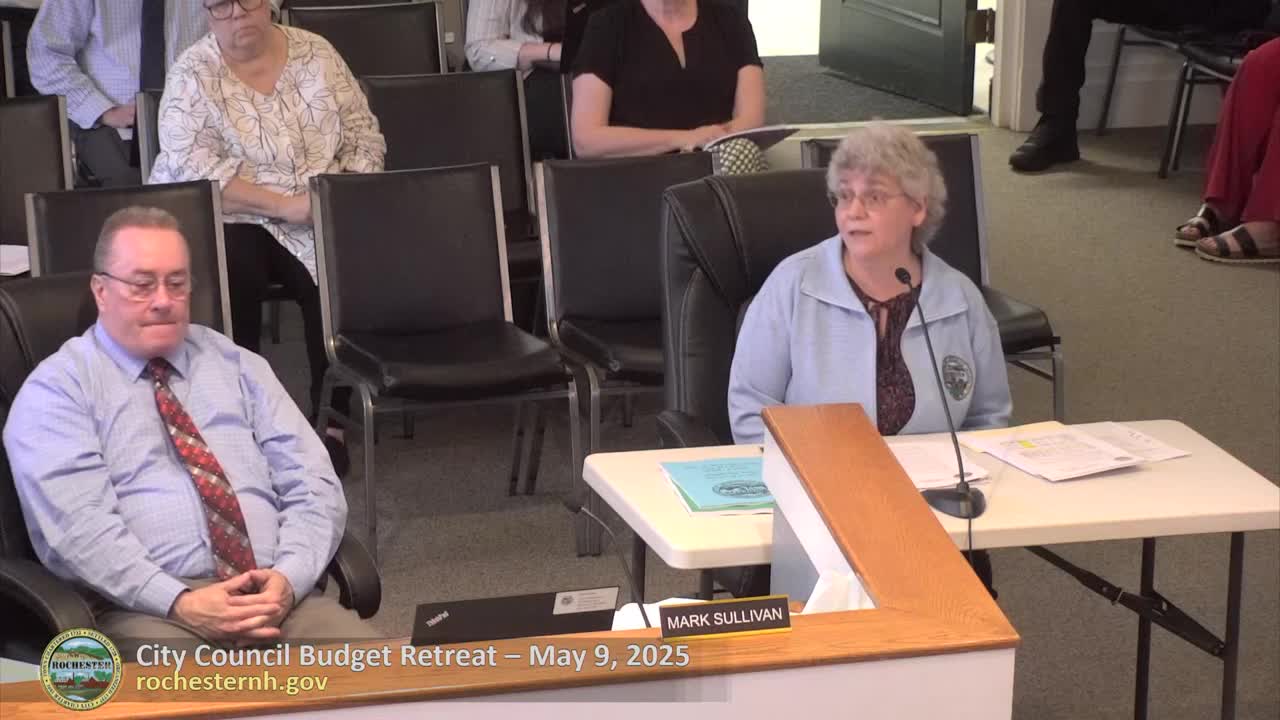Rochester reviews $200 million debt service ahead of FY26 budget approval
May 09, 2025 | Rochester City Council, Rochester City , Strafford County, New Hampshire
This article was created by AI summarizing key points discussed. AI makes mistakes, so for full details and context, please refer to the video of the full meeting. Please report any errors so we can fix them. Report an error »

Rochester, NH, is poised to navigate a complex financial landscape as the City Council reviewed its debt service during a recent budget retreat. The meeting highlighted the city's current debt situation and the implications for future budgeting, particularly as it prepares for the fiscal year 2026.
The council discussed the city's debt service overview, revealing that Rochester's general fund debt limit has increased to $163.9 million, based on an equalized assessed value of $5.46 billion. This places the city in a strong position, with a debt ratio of 3.82%, well below the benchmark of 5% set by rating agencies. The council noted that 68% of the $112 million currently issued debt is expected to be retired by 2034, providing some relief in future financial planning.
However, the discussion also underscored the challenges ahead. The city has seen a significant rise in project costs and mandates, leading to an average of over $34 million in bond appropriations for the upcoming years—triple the previously established benchmark of $11 million annually. This surge in borrowing raises concerns about the sustainability of the city's financial health, particularly for its water and sewer funds, which are already facing repayment challenges.
The council emphasized the need for a thorough review of budgetary borrowing limits to ensure long-term sustainability. As the city prepares for potential rate increases in water and sewer services, effective management of debt will be crucial to mitigate impacts on taxpayers.
In summary, while Rochester's current debt ratios are favorable, the city faces pressing challenges that require careful planning and strategic decision-making to maintain financial stability in the years to come. The council's proactive approach in addressing these issues will be vital as they work towards a balanced budget and sustainable growth.
The council discussed the city's debt service overview, revealing that Rochester's general fund debt limit has increased to $163.9 million, based on an equalized assessed value of $5.46 billion. This places the city in a strong position, with a debt ratio of 3.82%, well below the benchmark of 5% set by rating agencies. The council noted that 68% of the $112 million currently issued debt is expected to be retired by 2034, providing some relief in future financial planning.
However, the discussion also underscored the challenges ahead. The city has seen a significant rise in project costs and mandates, leading to an average of over $34 million in bond appropriations for the upcoming years—triple the previously established benchmark of $11 million annually. This surge in borrowing raises concerns about the sustainability of the city's financial health, particularly for its water and sewer funds, which are already facing repayment challenges.
The council emphasized the need for a thorough review of budgetary borrowing limits to ensure long-term sustainability. As the city prepares for potential rate increases in water and sewer services, effective management of debt will be crucial to mitigate impacts on taxpayers.
In summary, while Rochester's current debt ratios are favorable, the city faces pressing challenges that require careful planning and strategic decision-making to maintain financial stability in the years to come. The council's proactive approach in addressing these issues will be vital as they work towards a balanced budget and sustainable growth.
View full meeting
This article is based on a recent meeting—watch the full video and explore the complete transcript for deeper insights into the discussion.
View full meeting
